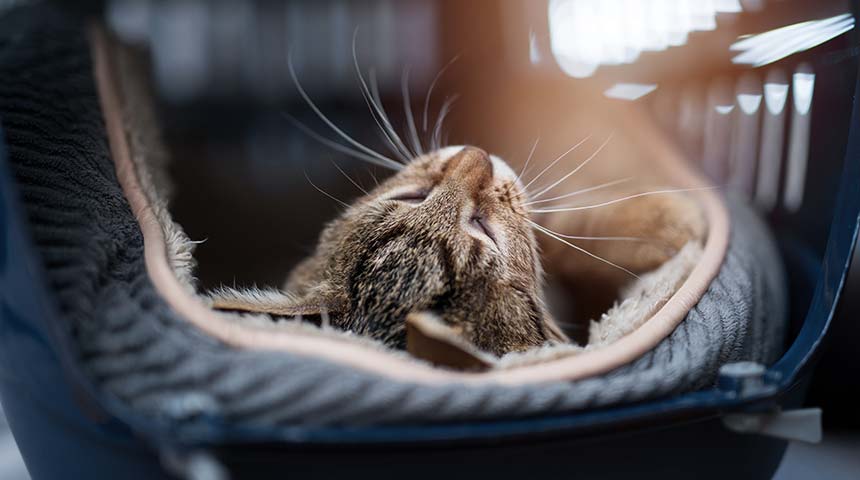
Before leaving
- Make sure that your cat will be happy to travel… i.e., will it suffer from travel sickness? Will it be homesick? If it is the case, you may have a much less pleasant vacation. Fortunately, there are some alternatives.
- Check with your family and friends. Perhaps a person you know could "baby sit", or you could leave your pet at a reputable facility. Don’t hesitate to ask your veterinarian for advice – they know your pet will and could offer good advice!
Planning my cat’s vacation
- Check with airline, railroad or cruise companies to find out if cats are allowed to travel and, if so, what type of reservations and arrangements should be made.
- Make sure pets are allowed in the hotel, motel or campground that you will visit.
By plane
- First, find out about the airline rules, reservations to be made and procedures that need to be followed when boarding. Get this information as soon as possible!
- Try to find as direct a flight as possible or with the fewer stops.
- Arrive early at the airport in order to place your cat in the baggage hold and retrieve it quickly when you reach your destination.
By car
- Ideally, if your pet is not used to car travel, have it practise with small rides during the days preceding your departure so it will get accustomed to it.
- Plan stops every 2 hours or so for exercise, nature's needs and snacks. To avoid "accidents" in the car, it is preferable to give the main meal at the end of the day.
- Don't forget that you should never leave your pet in a parked car for a long period of time, especially on sunny days. The temperature in the car goes up quickly and this could have terrible consequences for your pet - heat strokes can be deadly!
By bus, train or boat
- Obtain information from companies to make sure you can travel with your pet. If possible, note the various procedures and requirements you need to follow.
Vaccination and Other Medical Information
Generally speaking, if you are thinking about travelling in the United States, make sure that the rabies vaccine schedule is up to date and that your cat is in good health. As an extra precaution, ask your veterinarian for a health certificate (a medical exam will obviously be necessary).
If you are thinking about travelling abroad, visit the Canadian Food Inspection Agency website, under "Travelling with pets" www.inspection.gc.ca. You will find all the information you need regarding vaccines, necessary documents, rabies serum antibody titers and the type of identification required for your cat (microchip and/or tattoo).
For more information, communicate with the consulate of the country in question.
If your pet seems anxious or if it is agitated in the car for example, your veterinarian can prescribe some medication in order to make your pet's trip and yours more pleasant. This will require a veterinarian exam; plan in advance, don’t wait the day before your departure!
General Advice
- Don't forget to have your pet microchipped. We advise you to find out about the regulations in force at your destination, as some countries may require this. To find out more about microchipping, click here
- Make sure your pet is wearing a collar with complete information and/or an identification tag.
- Have on hand its favourite toy, a leash, some food (preferably kibble) and fresh water.
- In addition, make sure the transport cage (if necessary) is sturdy, large enough to allow your cat to move (turn around, lie down and stand up). It must have a waterproof floor, a food and water area, and it must lock securely.
- Don’t forget to visit our “First Aid” page – there, you’ll find a list of everything you should have on hand for your pet!

